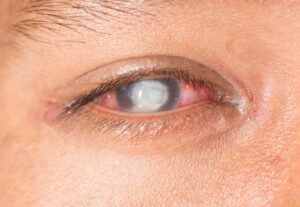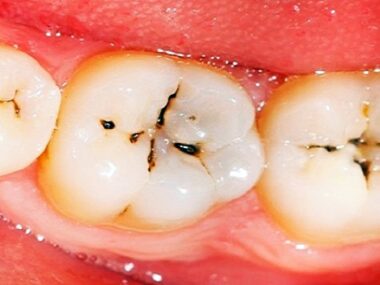Traumatic eye ulcers also referred to as corneal abrasions, are frequent ocular accidents resulting from direct trauma to attention. These accidents can result in vital discomfort, visible disturbances, and potential problems if not promptly recognized and managed.
Understanding the causes, diagnostic strategies, and applicable administration methods for traumatic eye ulcers is essential for guaranteeing optimum outcomes and preserving visible well-being.
Causes of Traumatic Eye Ulcers
Traumatic eye ulcers can happen attributable to numerous causes, together with:
- Overseas Our bodies: Small particles, corresponding to mud, sand, or metallic fragments, can scratch the floor of the cornea, resulting in abrasions.
- Chemical Publicity: Contact with irritants or caustic substances, corresponding to family cleaners or industrial chemical compounds, can lead to chemical burns to the cornea, inflicting ulcers.
- Blunt Trauma: Direct effect to the attention of objects like fists, balls, or projectiles may cause corneal abrasions or lacerations.
- Scratches from Fingernails or Contact Lenses: Unintended scratching of the attention with fingernails or improper dealing with contact lenses can result in corneal abrasions.
- Vehicle Accidents: Particles or airbag deployment throughout vehicle accidents may cause trauma to the eyes, leading to corneal accidents.
Prognosis of Traumatic Eye Ulcers

Diagnosing traumatic eye ulcers sometimes includes a complete eye examination, which can embrace the next steps:
- Affected person Historical past: Inquire in regards to the circumstances surrounding the harm, together with the kind of trauma, signs skilled, and any earlier ocular situations or surgical procedures.
- Visible Acuity Evaluation: Consider visible understanding to evaluate the extent of visible impairment attributable to the harm.
- Slit-Lamp Examination: Use a slit lamp, a specialised microscope, to look at the cornea and surrounding buildings for indicators of abrasions, international bodies, or irritation.
- Fluorescein Staining: Instill fluorescein dye into the attention to focus on any defects or irregularities on the corneal floor, facilitating the visualization of abrasions or ulcers below blue gentle.
- Evaluation of Tear Movie: Consider the tear movie’s high quality and amount to find out if dry eye syndrome or insufficient lubrication contributed to the event of the ulcer.
- Intraocular Strain Measurement: Measure intraocular stress to rule out the presence of related situations like traumatic glaucoma.
Administration of Traumatic Eye Ulcers
The administration of traumatic eye ulcers goals to alleviate signs, promote corneal therapeutic, and stop problems. Remedy methods might embrace:
- Topical Antibiotics: Prescribe broad-spectrum antibiotic eye drops or ointments to forestall secondary bacterial infection and promote corneal epithelial therapeutic.
- Ache Administration: Administer topical or oral analgesics to alleviate ache and discomfort related to the ulcer.
- Cycloplegic Brokers: Use cycloplegic eye drops to reduce muscle spasms and alleviate photophobia and ciliary-related aches.
- Bandage Contact Lenses: Apply therapeutic smooth contact lenses to guard the cornea, promote epithelial therapy, and enhance the affected person’s consolation.
- Ocular Lubricants: Advocate preservative-free synthetic tears or lubricating ointments to take care of ocular floor hydration and facilitate epithelial regeneration.
- Observe-up Visits: Schedule common follow-up appointments to observe the progress of corneal therapeutic, assess visible understanding, and alter remedy as vital.
- Avoidance of Contact Lenses and Eye Rubbing: Instruct sufferers to chorus from carrying contact lenses and keep away from rubbing or touching the affected eye to forestall exacerbation of the harm.
- Surgical Intervention: Contemplate surgical restoration or intervention for extreme corneal accidents, corresponding to corneal lacerations or perforations, that aren’t amenable to conservative administration.
Problems and Prognosis
Problems related to traumatic eye ulcers might include corneal scarring, recurrent erosions, secondary infections, and imaginative and prescient loss.
Nevertheless, with immediate prognosis and applicable administration, the prognosis for many traumatic eye ulcers is favourable, with the decision of signs and restoration of corneal integrity within just a few days to weeks.
In conclusion, traumatic eye ulcers are frequent ocular accidents resulting from numerous causes, together with international bodies, chemical publicity, blunt trauma, and scratches.
A well-timed prognosis using a complete eye examination is important for initiating applicable administration and stopping problems. With immediate and sufficient remedy, most traumatic eye ulcers can heal efficiently, preserving visible operation and guaranteeing optimum ocular well-being.










